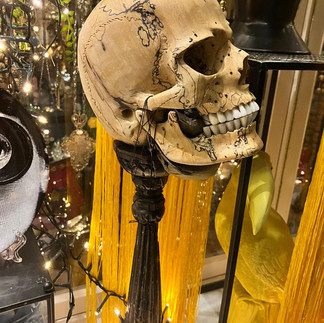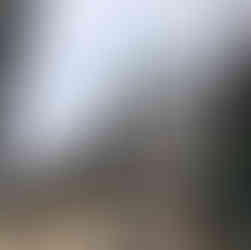The Shamanic Dog from Kongo and the Lake of Zürich
- Aleksandra
- 16. März
- 5 Min. Lesezeit
Aktualisiert: 18. März
About a week before Christmas I took the Friday afternoon flight to Zürich and landed in the middle of a Swiss Christmas snowball. I had 10 minutes to change into my opera outfit, as Giselle Ballet was about to start very soon and I wanted to be there.
I hastily dug in my suitcase - healthy mix of dry suit for diving, fins, some high heels and a small black velvet dress, I quickly transformed from a traveller to a lady. Smudge of lip colour, small drop of perfume on my wrist. Done. Rushed through the city in a swirl of snowflakes, diving into the warm, gold-lit interior of the gorgeous theater sitting proudly on the Sechseläutenplatz, right on the edge of the bustling Christmas Market.
I cherished the warm and moving evening hours in the opera, cried watching the soloist Max Richter perform the mad scene and comforted my broken heart with a glass of cool Riesling during the pause.
From the next day it would be kilos over kilos of gear and freezing murky waters of Zürich See for the rest of the weekend. I wasn’t here for holiday markets and fondue—but for technical diving, for cold that seeps into your bones and training that leaves your muscles wrung out like an old dishcloth. Because just a short drive along the shore, one of the best technical diving training centers operates in an atmosphere of quiet intensity.
But that's a different story.
By the time Sunday night rolled around, my body was wrecked, and I should have stayed in bed after my usual Nüsslisalat with Bacon, reading or scrolling, yet something called me out for a walk into the old town of Horgen.
On a Sunday evening like this, a week away from Christmas, Horgen was very still. Its old streets lit by Christmas lights that flickered in shop windows, reflecting off the damp cobblestones. I wandered uphill toward the church, attracted by its lit tower in contrast against the velvet black sky, standing over the town, and that’s when I saw it.
A small, old house, tucked neatly at the bend, as if it had always been there and I liked it instantly.
I wandered up to the window, expecting maybe a cozy little bookstore or cafe. Instead - a skull staring straight at me.
I froze. Not out of fear, but because my brain needed a moment to process the sheer randomness of what I was looking at. Antique instruments, a taxidermy something, African bead art, shamanic drum, Yaptik's masks - all put together in a way that felt less “carefully curated” and more “person with very deep connection to different dimensions and no concept of minimalism.”
A sign read: Wunderkammer.
A cabinet of curiosities.
Well. That explained a lot.
And still, not enough.
I leaned in closer, my breath fogging up the glass. In the back, more shelves stacked with even more oddities. Shamanic masks dangling from the ceiling like guests at a ghostly masquerade. Velvet Globe de Mariée displays, religious artifacts from far corners of the world. My brain, running on post-dive exhaustion, struggled to process whether this was real or whether I was experiencing some kind of delayed-onset nitrogen narcosis.
Looking for the entrance or any kind of information, I walked around the corner which led me to a small sign - the Wunderkammer was only open for a few hours on Saturdays. Just long enough to keep people intrigued, but not long enough to be convenient just for anyone, anytime.
Oh well.
Sadly, I wasn’t exactly planning on coming back to Horgen anytime soon.
And yet…
++++
Despite my best efforts to move on with my life, Horgen had other plans. As my preparations for the Iceberg Diving in August 2025, which had brought me to Horgen in the first place, were moving forward, I had to come back to torture myself a great deal further and question my life choices while bobbing in the cold and murky waters of the Zürich See.
Of course I had checked again the opening hours of the Wunderkammer, but it was not going to work out this time, either - 12 till 4 PM was when I was supposed to be underwater, practicing deploying surface marker buoy, navigate without a dive mask, or showing off my very (still im)perfect backward frog kick skills.
So, once again, it seemed like this little cabinet of curiosities would remain just that—a curiosity.
But then, somehow, the diving gods—or maybe just sheer efficiency—decided to cut me a slack. I managed to finish everything a while earlier than planned.
Which left me, after I got de-briefed and received my certificate, exactly 40 minutes to make it to the shop.
And make it, I did.
++++
Amid relics of forgotten rituals and artifacts heavy with unseen weight, I found him.
Leonie, the owner and Conditrix Mirabilium of the Wunderkammer, squatted with me next to that specific Fetish and told me its story.
A dog-like creature, seeing both the world we know and the one just beyond our reach. Its body, pierced through with nails, stood frozen in a silent command—each jagged piece of iron a testament to a force summoned, and maybe a call answered. The deep grooves of time and ritual marked its surface, whispering of hands that had invoked its power. This Nkisi Nkondi Kozo was no mere effigy. It was truly a vessel—crafted to contain something far greater than its physical form, a spirit bound within, waiting to be stirred into action. A guardian, a hunter, a force of reckoning.
No photo of that specific Nkisi here, as its very personal, but some other oddities:
Nkisi nkondi figures originate from the Kongo people, a Bantu ethnic group residing in what is now the Democratic Republic of the Congo. Nkisi refers to spirits or objects that house spirits, while nkondi are a specific type of nkisi known for their aggressive nature, used to enforce oaths and punish wrongdoing.
These figures were made through a collaboration between sculptors and spiritual specialists called nganga. The sculptor carved the wooden figure, which could vary in size from under a foot tall, like the one in the Trent Collection, to life-sized. A hollow space was carved into the head or stomach, which was then filled with spiritually significant materials, such as soil from an ancestor’s grave. This cavity was sealed with a piece of glass or a mirror, which was thought to allow the spirit to see into the human world. The figures were commonly placed at the outskirts of villages, as these areas were considered vulnerable and needed protection from external threats.























